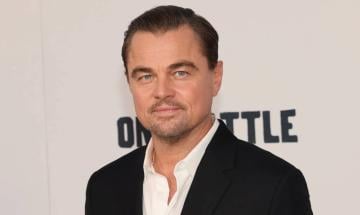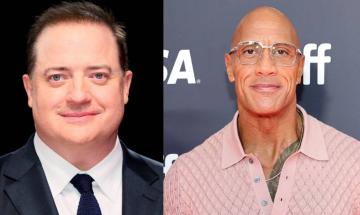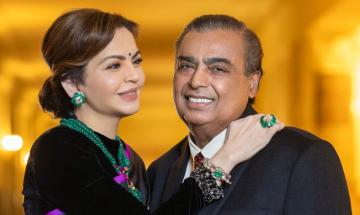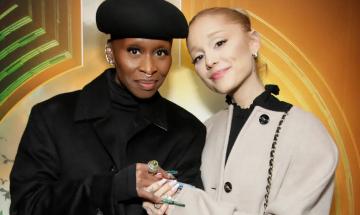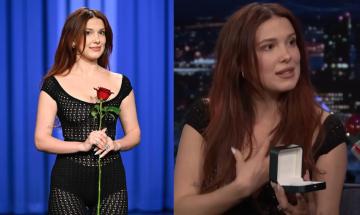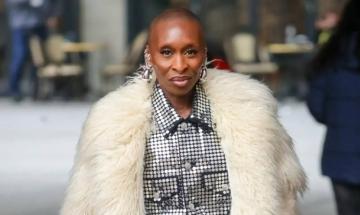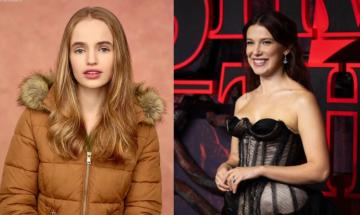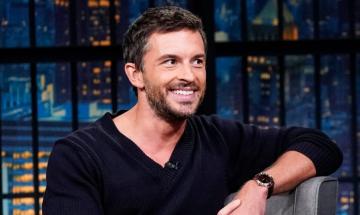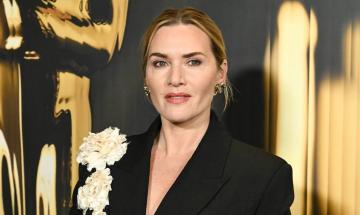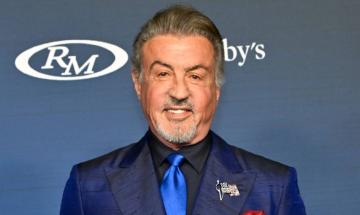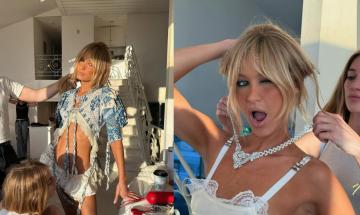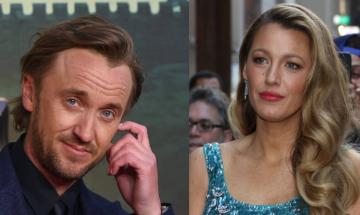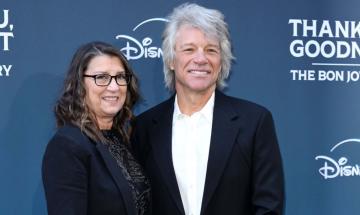Home / Entertainment
The Devil Wears Victoria Beckham? — Examining one fashion classic’s heritage post Anna Wintour’s era
How ‘The Devil Wears Prada 2’ can predict fashion’s future amid its original inspiration’s collapse
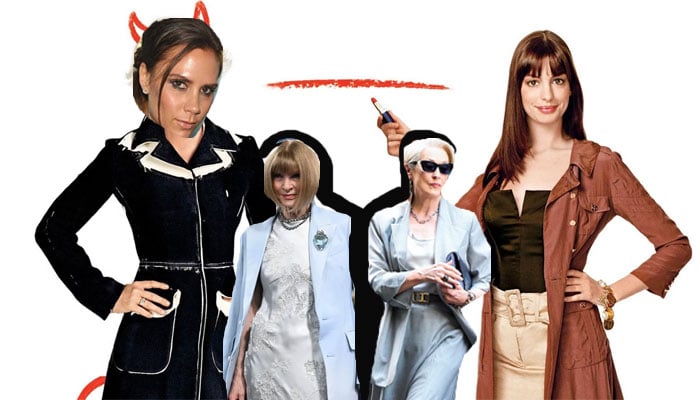
Amid a sea of dreaded reboots and revivals, one title is shouldering the responsibility of serving the biggest platter of buzz, anticipation, and…looks?
Indeed, The Devil Wears Prada sequel’s current production has quickly sparked tons of attention, as the second coming of a classic among the distinguished canon of cinema’s fashionable offerings, literally and figuratively, looks a cut above the rest.
With audiences at home being helped to multiple paparazzi shots from the forthcoming sequel’s production, often several times during a single day, the movie’s shoot from the streets of New York City couldn’t have come at a more opportune moment.
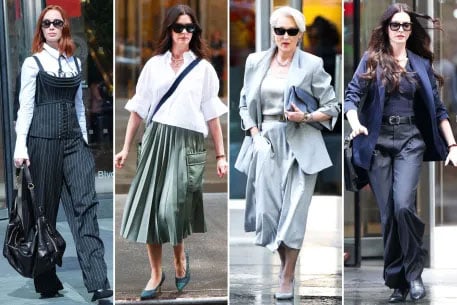
As Vogue’s longtime and well regarded Editor-in-Chief, Anna Wintour announced her departure from the position which has become synonymous with her image at this point, The Devil’s return seems a tad too convenient.
However, as these things go, several cinematic moments have aligned or collided with real world events many times over.
Keeping that in view, the brief teaser of the Prada sequel’s plot made Wintour’s exit seem even more timely; according to Variety, the new film will follow Meryl Streep’s Miranda Priestly “as she navigates her career amid the decline of traditional magazine publishing and as she faces off against (Emily) Blunt’s character, now a high-powered executive for a luxury group with advertising dollars that Priestly desperately needs.”
In many ways, the Vogue chief’s retreat not only sent shockwaves through the world of fashion and beyond, but also echoed Prada’s latest plot details which hint at an aging female executive’s place in the modern landscape of an industry she has helped form the contours of.
Therein, the legacy of The Devil Wears Prada 2 is already shaping up quite profoundly, despite the movie being released into a world significantly altered since the original’s launch.
Wintour of discontent
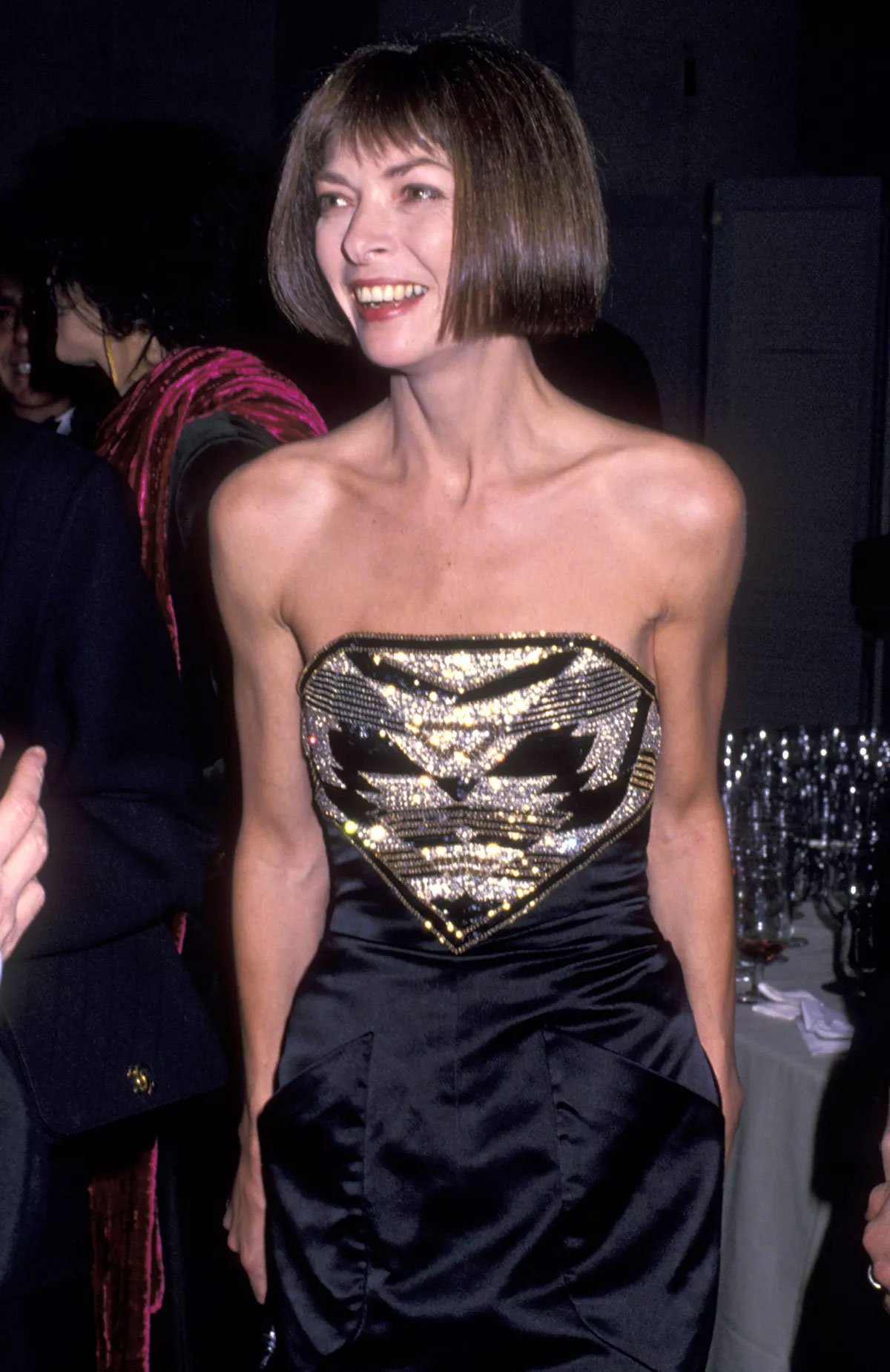
When Anna Wintour first joined the American Vogue as their Editor-in-Chief, she brought with her a fresh perspective.
Her first cover for the publication featured a lesser known model, Michaela Bercu, posing in a formal Christian Lacroix jacket, paired with casual denim and an unabashedly huge smile.
With minimal makeup and no visible accessories at all, the cover’s outdoor setting and laid back look confused even the printers at the time, who wondered, “Has there been a mistake?”
“I couldn’t blame them. It was so unlike the studied and elegant close-ups that were typical of Vogue’s covers back then, with tons of makeup and major jewellery. This one broke all the rules,” the Met Gala host later recalled in a 2012 conversation with her own magazine.
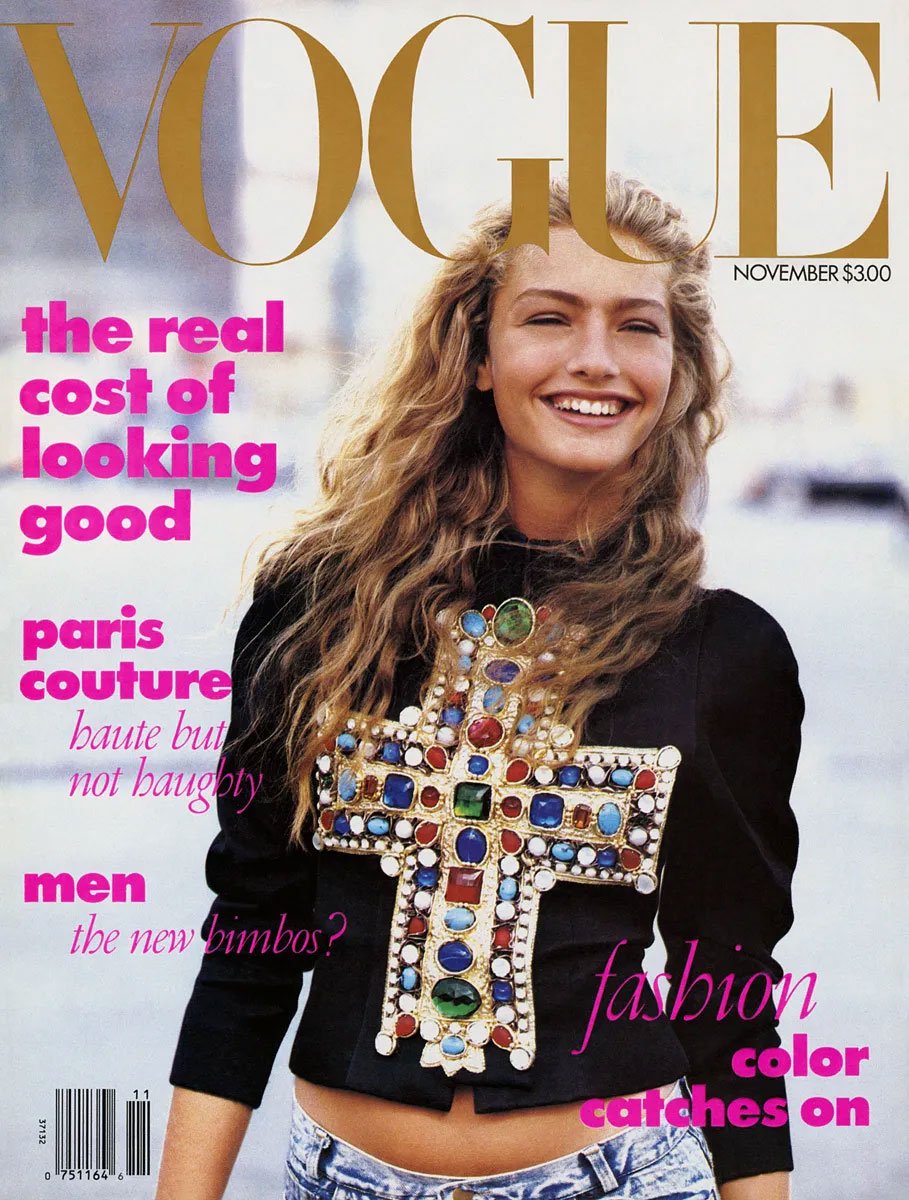
With her elegant taste and power leading skills however, also came Wintour’s unforgiving way of going about things, the brunt of which was mostly aimed towards her subordinates.
It was one such subordinate, Lauren Weisburger, who went on to pen the novel which was later adapted as 2006’s The Devil Wears Prada.
Weisburger, now a well established writer, once worked as Wintour’s assistant at Vogue for 10 months, before leaving the publication to join another as their assistant editor, when she came to realise that her writing aspirations were not going to prosper while she ran around town arranging coffee for her boss everyday.
Prada’s protagonist, Andy Sachs, and the fictional magazine Runway’s Editor-in-Chief character Miranda Priestly, were thus heavily inspired by the assistant-turned-writer’s own interactions with her boss.
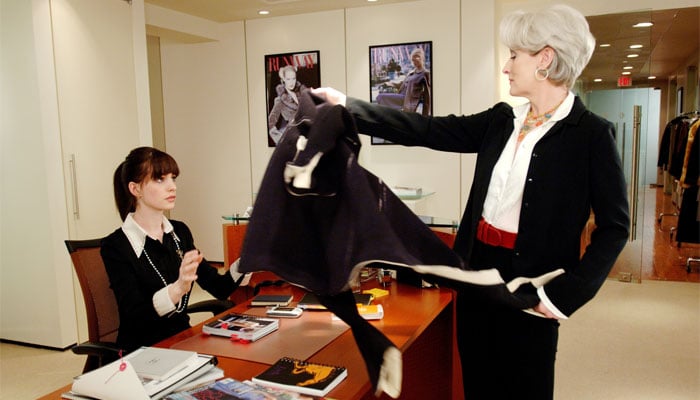
At the time of the original film’s release, through Miranda’s iconic “Cerulean sweater” monologue and other memorable moments, the mainstream crowd’s orientation with the fashion world happened in a way that was also fun and desirable for them.
While audiences may have come to be educated by the film’s lighthearted sequences, emulating the reality of life in fashion, when Andy eventually chooses to leave her job behind, much like the writer who created her, it comes as a tipping point where she chooses to consciously separate herself from the kind of person her boss was and what she represented.
That realisation dawns after Miranda betrays her longtime colleague while securing her own job; however, when she tells Andy that she sees “a great deal” of herself in her, is when the character under Anne Hathaway’s command, makes her final decision.
While the first movie paints Miranda as an indomitable force, someone who outsmarts her dissidents to ascertain her career’s fort, its sequel promises to explore the unthinkable; with the once powerful boss thrown into insecurity and having to compete with those who once worked for her.
Whispers of Anna Wintour getting too old for her job have circulated for a long time as well, though her step down only came in 2025.
Even at that, she still gets to stay at Vogue as their global editorial director.
With the fictional character based on Wintour facing the same conundrum, though almost a whole decade before it transpired in reality, it is entirely possible that its upcoming revival may in fact adapt itself according to the latest developments — perhaps even succeed in predicting what’s to come — as it did once before.
The question of succession
The most recent edition of Vogue US suffered its first blow immediately after its former Editor-in-Chief vacated her position.
An AI model named Seraphinne Vallora, because such a thing exists now, was recently found to have featured in Vogue’s August issue.
The outrage was instant and unbarred, as the move, once unthinkable, laid bare right at a rapidly changing zeitgeist’s disposal.
Recently, the New York Times ran a quiz titled Could You Have Landed a Job at Vogue in the ’90s?, where the publication quizzed readers on their cultural knowledge, based on the list originally curated by Vogue.
The list included various film titles, names of artists and prominent personalities from different fields, novels, et al.
Apparently, candidates who applied to work at the iconic fashion publication had to go through their cultural literacy requirements, which also regarded models with the same respect as it did any other landmark artist, with names like Christy Turlington, Veruschka, and others making the cut.
The question of Anna Wintour’s succession therefore remains a hotly contested one, as the empire clearly needs to be reined in before it goes up in the flames of contemporary mediocre trends.
Names like Victoria Beckham, former British Vogue editor Edward Enninful, journalist Eva Chen, and more, including Wintour’s own daughter Bee Shaffer Carrozzini, have been brought up here and there; though, a clear candidate has not yet emerged.
Fashion historian Dr. Kate Strasdin has noted, “Anna Wintour has had to tread the tightrope of maintaining relevance as far as style is concerned at the very same time that fashion has had to undergo re-evaluation in relation to sustainability, plagiarism, and labour conditions.”
She further informed the BBC that the British editor’s replacement would have to navigate these “very real concerns” to succeed where she once stood.
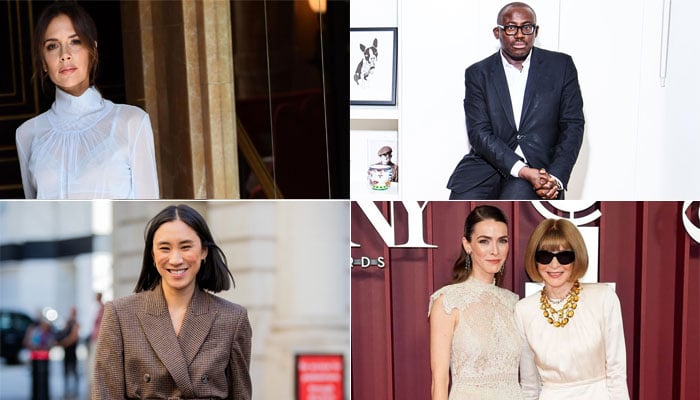
The Prada legacy
The Devil Wears Prada 2 now has the best opportunity to fulfill the tempting desire which it has warranted so far.
Even if does not match up to its predecessor — as it is sure to disappoint some along the way no matter what — staying true to its roots and aligning itself with the human side of artistic expression, when the world in its current state stands at the precipice of losing that identity, the sequel can singlehandedly revive not only its own legacy, but the fashion trade’s implicit status in pop culture’s drift as well.
For now, audiences would have to wait until May 1, 2026, to see how the story shapes up.
In the meantime, the intersection of fans between the movie and fashion followers have Miranda Priestly’s fate to look forward to; an artistic decision which will decide whether the film understands its own heritage.
